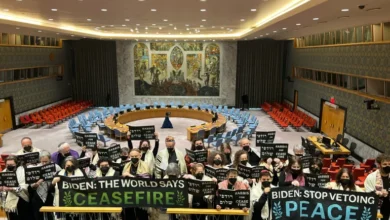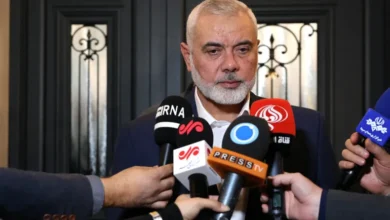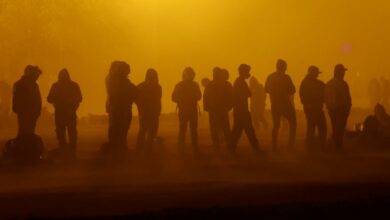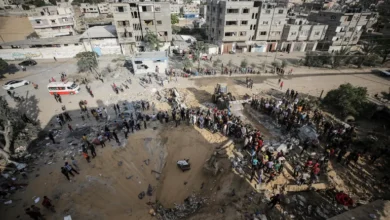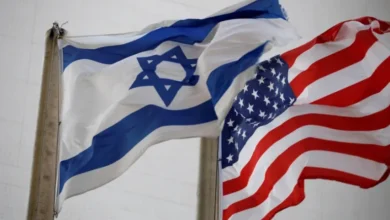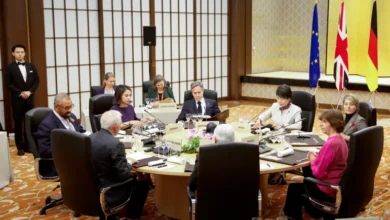Palestinians in Israel also face a Nakba
Mohamad Kadan
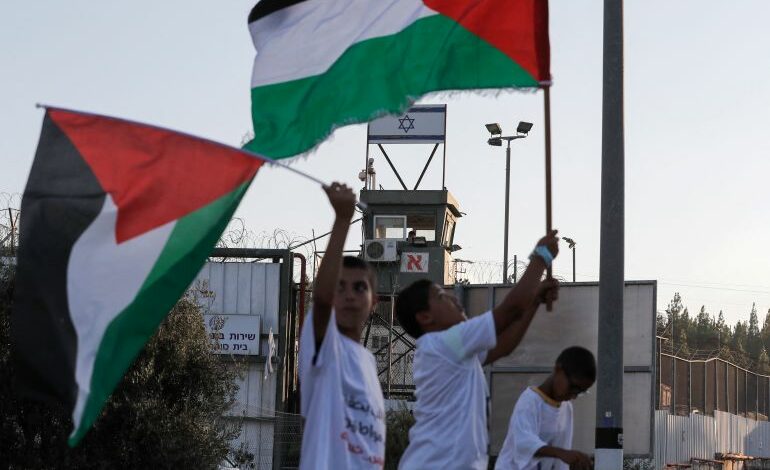
Mohamad Kadan
In the aftermath of Hamas’s attack on October 7, Israel embarked on a violent, bloody campaign against the Palestinian people. The residents of Gaza have borne the brunt of it, with more than 14,000 people killed by indiscriminate Israeli bombardment, including more than 5,500 children.
The onslaught has extended to the West Bank as well, where the Israeli army and settlers are carrying out raids and killing civilians daily; more than 200 have been murdered, thousands detained and scores tortured. Palestinian citizens of Israel, too, have been subjected to arrests, harassment, and economic retribution, through dismissals from jobs.
But the ongoing violence is not meant to quench the thirst for “vengeance”, as some have suggested. It is systematically moving towards a long-term goal: the complete erasure of Palestinian existence within historic Palestine. This plan was in the workings already even before October 7; it has now simply been accelerated.
On Gaza, Israeli officials have been more than clear. There will be a full expulsion of the population. As Minister of Agriculture Avi Dichter stated on November 11: “We are practically repeating the Nakba if you will, this is the Nakba of Gaza.”
A leaked internal document from the Ministry of Intelligence has confirmed that the Israeli government is aiming to make good on these threats.
Israeli plans for a Nakba in the West Bank are also coming to the fore. Finance Minister Bezalel Smotrich has said there need to be “belts” around the illegal Israeli settlements that “Arabs” will be banned from entering.
Earlier this year, he also outlined plans to ensure territorial continuity for the Israeli settlements, which would effectively amount to more expulsions of Palestinians from their land and its annexation.
For the Palestinians with Israeli citizenship, who make up 21 percent of the Israeli population, the plan may not be that publicised, but it is there. They too face a Nakba and it too has been long in the making.
Forced expulsion postponed
After the establishment of the Israeli settler-colonial state in 1948, which resulted in the expulsion of 750,000 Palestinians from their towns and villages, the Israeli government scrambled to prevent the return of refugees, which the United Nations had guaranteed in Resolution 194 of 1948.
That is why it decided to establish military rule in the Palestinian territories it occupied, where almost 150,000 Palestinians had managed to remain. This special regime aimed at not only preventing any Palestinians from trying to go back to their homes, but also at surveilling and persecuting the remaining population, with the ultimate goal of eventually expelling them.
Archival documents, described in Israeli historian Adam Raz’s book The Kafr Qasim Massacre: A Political Biography, showed that a plan was prepared in the early 1950s to deport the Palestinians to Jordan, Lebanon, and Sinai in the event of war.
In 1956, when Israel, along with Britain and France, invaded Egypt trying to gain control of the Suez Canal, it saw an opportunity to turn on the remaining Palestinian population. Israeli border guards attacked the village of Kafr Qasim on the border between Israel and the West Bank, then administered by Jordan, killing 49 people, including 23 children. The attack was aimed at instilling fear in the Palestinian population and compelling them to flee – a tactic already employed in 1948.
But it backfired. News of the massacre spread, which resulted in international pressure on the Israeli authorities to backtrack on pursuing their forced transfer strategy. Furthermore, their own intelligence assessment showed that many of the remaining Palestinians did not pose a major “security” threat.
Over the following decade, military rule over the remaining Palestinians persisted; they were denied the right to movement, civil liberties, and basic services. They were only granted these rights after 1966. They were also given Israeli citizenship, but that did not make them equal to the Jewish citizens of the state.
Those who were displaced were still denied the right to return to their homes; their lands remained confiscated. Palestinian communities were never granted the same level of services as Jewish settlements and towns were; they never received the same care from the state in terms of education, healthcare, etc.
Their economic prosperity was curbed, dooming many of them to hardship and poverty. All this was accompanied by an assimilation strategy aimed at erasing the Palestinian identity and sense of nationhood and rendering the Palestinians a silent, faceless minority with a second-class citizenship.
The ‘transfer strategy’ revisited
After the 1950s, the population transfer strategy was put on the back burner, but it was never completely renounced. In the 2000s, it came back, albeit in an updated form.
In September 2000, the second Intifada broke out as the so-called “peace process” failed to deliver on Palestinian statehood and Israel continued to expand its illegal settlements in the Palestinian territories it occupied in 1967. The trigger was a provocative raid by former Israeli Defence Minister Ariel Sharon on the Al-Aqsa Mosque compound, Islam’s third-holiest site.
As Palestinian demonstrations erupted in occupied East Jerusalem and spread to the West Bank and Gaza, the Palestinians in Israel took to the streets, fully embracing the national Palestinian cause. They organised protest actions, which were brutally suppressed by the Israeli security forces.
These events shook the Israeli establishment and intelligence and forced them to reconsider their strategy of assimilation toward the Palestinians within Israel. This is how the transfer strategy was put back on the table and remodelled to fit the new reality.
Instead of resorting to massacres to scare Palestinians into leaving, the Israeli authorities decided to disrupt and destroy Palestinian communities from within and thus trigger an exodus.
Economic opportunities for Palestinians sharply dwindled after 2000, leading to a high unemployment rate. The neglect from which Palestinian communities already suffered then worsened even more, while the Israeli authorities allowed and facilitated organised crime to proliferate.
In parallel, the Israeli authorities pushed for further entrenching apartheid within Israel through legal measures. Perhaps the most significant among them was the Jewish Nation-State Law that was passed in 2018.

